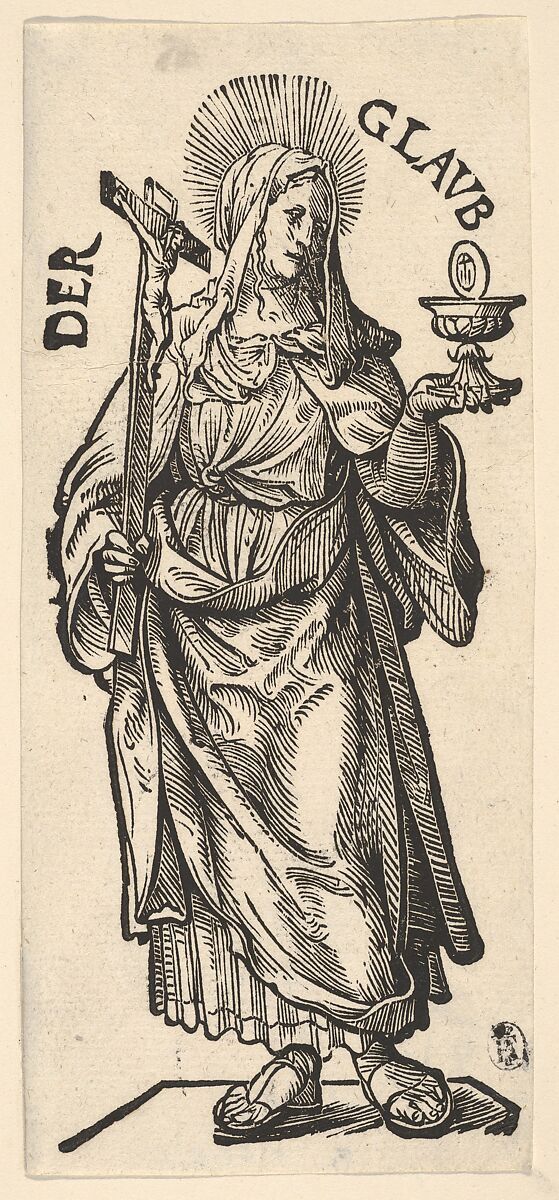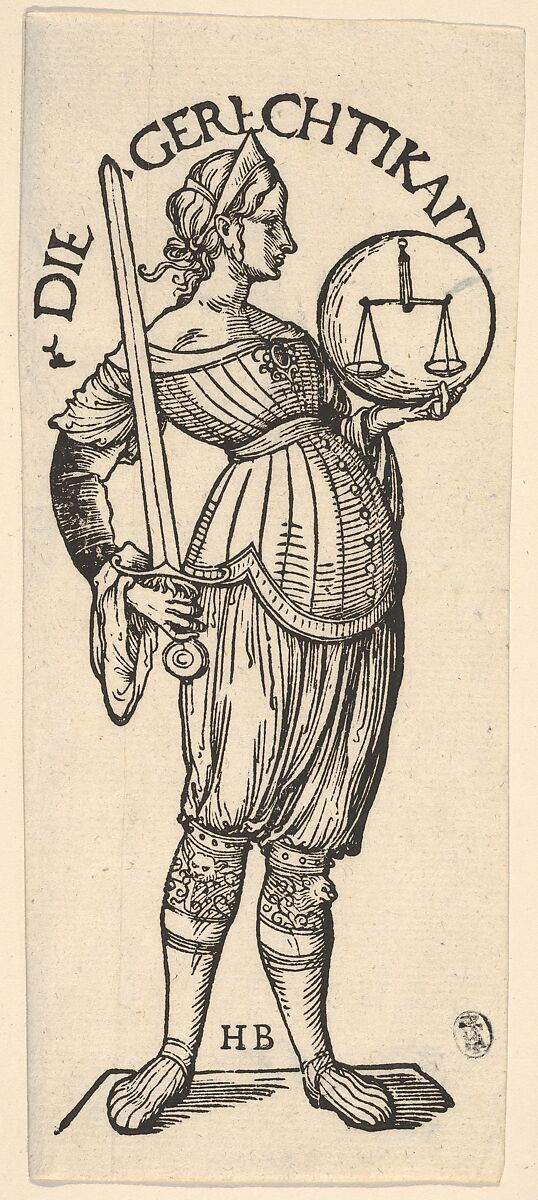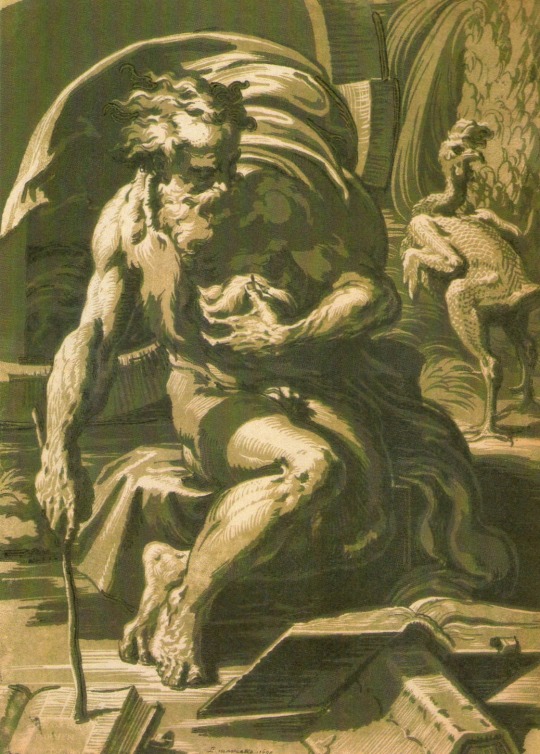#Hans Burgkmair
Explore tagged Tumblr posts
Text

Hans Burgkmair (1473-1521), The king of Feuereisen and his only daughter (from ‘Der Weißkunig’)
Der Weißkunig (The White King) is a loosely biographical account of the life of Holy Roman Emperor Maximilian I. The text, composed by Maximilian’s secretary Marx Treitz-Sauerwein, is accompanied by illustrations by Burgkmair, Leonhard Beck, Hans Schäufelein and Hans Springinklee, with the proofs completed between 1514 and 1516. However, they remained unpublished until the blocks were rediscovered in 1775, at which point they were published as a book by Hoffstätter in Vienna. The first edition was published again in 1799 by S. Edward in London with the French title Tableaux des principaux evénemens de la vie et du regne de l'empereur Maximilien I. It includes 236 woodcut illustrations.
16 notes
·
View notes
Text







The Seven Virtues, Hans Burgkmair (1473 - 1531)
(In order, Prudence, Hope, Temperance, Charity, Faith, Justice, and Fortitude)
19 notes
·
View notes
Photo

Hans BURGKMAIR D. Ä. - The Elder (1473-1531) “Preco, der Verkündiger des Triumphes” “Preco, the Herald of Triumph” 1516 - 1518 (Abzug - printed in 1526) Holzschnitt / Woodcut Sammlung / Collection ALBERTINA Wien / Vienna Ausstellung / Exhibition Dürer, Munch, Miró. The Great Masters of Printmaking ALBERTINA Wien / Vienna - 2023
#hans burgkmair#preco#herald of triumph#woodcut#holzschnitt#Albertina Vienna#the masters of printmaking#burgkmair#augsburg#printmaker#painter
49 notes
·
View notes
Text

The Lovers Surprised by Death, 1510, Hans Burgkmair (German, 1473–1531), chiaroscuro woodcut, Cleveland Museum of Art
1 note
·
View note
Text

Hans Burgkmair - Portrait of a Young Man - 1506
1 note
·
View note
Text

Hans Burgkmair - Christ's body carried to the Tomb
0 notes
Text
For those interested, the knight is battling a "Wild Man". Which, as I said before, was an actual "type" of creature or character in European folklore, not just some random guy walking by the woods

Hans Burgkmair • Fight in the Forest, 1500s
105 notes
·
View notes
Text

Eleanor of Portugal, Holy Roman Roman Empress, Queen of the Romans
Artist: Hans Burgkmair the Elder (German, 1473–1531)
Date: After 1648
Medium: Oil on Panel
Collection: Kunsthistorisches Museum, Vienna, Austria
Eleanor of Portugal (18 September 1434 – 3 September 1467) was Empress of the Holy Roman Empire. A Portuguese infanta (princess), daughter of King Edward of Portugal and his wife Eleanor of Aragon, she was the consort of Holy Roman Emperor Frederick III and the mother of Holy Roman Emperor Maximilian I.
#portrait#eleanor of portugal#holy roman empire#empress#hans burgkmair the elder#german painter#17th century painting#oil on panel#costume#crown#flowers#book#portuguese nobility
7 notes
·
View notes
Text

#peoplematchingartworks#hans burgkmair#gemäldegalerie#stefandraschan#photography#contemporaryart#berlin
6 notes
·
View notes
Text
Renaissance Impressions, Chiaroscuro Woodcuts at the Royal Academy of Arts, London
Exhibition title: Renaissance Impressions Chiaroscuro woodcuts from the collections of Georg Baselitz and the Albertina, Vienna Dates: 15 March-8 June 2014 Venue: Royal Academy of Arts, Burlington House, Piccadilly, London W1J 0BD Admission price: £10.00 for an adult ticket, free to Friends of the Royal Academy This is an exhibition of sixteenth-century chiaroscuro woodcuts from Germany,…

View On WordPress
#chiaroscuro woodcuts exhibition#Hans Burgkmair the Elder woodcuts#making a two tone woodcut#Renaissance woodcut technique#Royal Academy of Arts exhibitions#turning paintings into woodcuts#Ugo da Carpi woodcuts#what is chiaroscuro
0 notes
Photo
Lover surprised by Death, Hans Burgkmair the Elder, 1510

24 notes
·
View notes
Text

Hans Burgkmair (1473-1521), The Battle of the Spurs (from ‘Der Weißkunig’)
Der Weißkunig (The White King) is a loosely biographical account of the life of Holy Roman Emperor Maximilian I. The text, composed by Maximilian’s secretary Marx Treitz-Sauerwein, is accompanied by illustrations by Burgkmair, Leonhard Beck, Hans Schäufelein and Hans Springinklee, with the proofs completed between 1514 and 1516. However, they remained unpublished until the blocks were rediscovered in 1775, at which point they were published as a book by Hoffstätter in Vienna. The first edition was published again in 1799 by S. Edward in London with the French title Tableaux des principaux evénemens de la vie et du regne de l'empereur Maximilien I. It includes 236 woodcut illustrations.
from here
10 notes
·
View notes
Text







The Seven Vices, by Hans Burgkmair, c. 1510
(In order: Pride, Greed, Wrath, Envy, Lust, Gluttony, and Sloth)
3 notes
·
View notes
Text




Lovers Surprised by Death (1510) by Hans Burgkmair the Elder Nosferatu (2024) dir. Robert Eggers
#nosferatu#nosferatu 2024#nosferatuedit#horroredit#perioddramaedit#fyeahmovies#filmedit#robert eggers#lily rose depp#nicholas hoult#films#🎬.mp4#the gothic imagination#some dread chord#myedit#this looked better in my head but i just really liked the looming shadow hands yk. anyway. evil username moment yay#there was also an interesting note about the woodcut by the cleveland art museum recording that#the costumes and pose of the woman resembled antique representations of daphne fleeing apollo. food for thought!
422 notes
·
View notes
Text



A Schlachtschwert, early XVIth century.
Spring steel blade of flat hexagonal section for most its length, mild steel fittings with hollow brass ball finials on the cross. Leather over thread over wooden core for the grip, and leather over wood for the sleeve (more about that below). This is a tentative reconstruction of what a "proper" Landsknecht Greatsword could look like, such a they appear on period artwork, be it paintings like the Siege of Alesia by Melchior Feselen (1533) or the Battle of Pavia kept at the Royal Armouries (or the tapestries depicting that same battle, now at the Museo Capodimonte, made after sketches by Bernard van Orley), the Victory of Charlemagne over the Avars near Regensburg by Albrecht Altdorfer (1518), or the many drawings, prints and woodcuts by artists such as Reinhart von Solms, Jörg Breu, the great Hans Burgkmair, Niklas Stör, Hans Holbein (both Elder and Younger), Virgil Solis, Hans Sebald Beham, the legendary Urs Graf, Daniel Hopfer, Erhard Schön, Hans Schäufelein and others...All of them combined to give this result.
Such swords would be seen not only in the hands of a Doppelsoldner, but also carried by your Feldwaybel or an Edelman. And it would be called a Schlachtschwert in the very captions of the illustrations I mentioned earlier (see Erhard Schön). *Not* a "two-handed Katzbalger", though the cross obviously echoes the S/8-shaped guard of the latter. We clear on that ? Good.
Very few of such swords are kept in museums out there, with a lot of them leaving me dubious regarding their authenticity. The one in Berlin seems to me to be the most genuine of all, and it is on its proportions that I based this piece, though the Berlin sword shows a fancy, diamond-pattern decoration on the quillions very much recalling the Katzbalger kept in the Museum of London. Most if not all period illustration do not show such fancy details on the crossguards though ; they are actually rather plain, without even the ribbing/threading/filework you can find on Katzbalger crosses. Hence I kept this one rather plain, with a square cross section with rounded corners, and some light filework at the center. I also bent the quillions into an offset 8-shape rather than a symmetrical one, to be more consistant with the earlier examples visible in period artwork.
The main questioning was that sleeve at the base of the blade, present on a lot of the period artwork; its obvious function was to provide a spot on which to put the other hand - as can be deduced from Marozzo's teachings for fighting against polearms - but the main issue was how was it made/what was it made of. Elaborating on my previous experience and studies of such things on later Schlachtschwerter, I went for a basic construction of leather glued/stitched over a wood core made of two flat slabs, and force-slid down the blade. There is more than enough friction to keep it well in place, but it is still possible to take it off albeit with some effort. The end of the leather is cut according to period artwork, and flares out to accommodate the mouth of a scabbard if needed. A simple decoration of plain lines on one side, and checkered on the other makes it also consistant with the artwork.
It is 139 cm long, the blade is 1083 mm long, 45 mm wide with a thickness of about 7 mm at its base, tapering down to 3.4 mm near the point. The span of the crossguard is about 21 cm, though from one ball end to the other there's about 73 cm of steel. Weight is 2547 grams, point of balance 13.5 cm from the cross.
Twenty-eight hundred EuroUnits and it's yours.
187 notes
·
View notes
Text

Lukas Furtenagel - The Painter Hans Burgkmair and His Wife Anna. Detail. 1529
46 notes
·
View notes